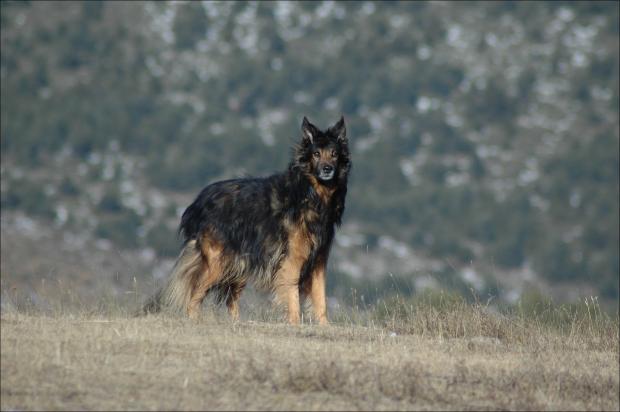 Have enough leather gloves for everyone that is helping you with checking the trap. This protects them AND your dog.
Have enough leather gloves for everyone that is helping you with checking the trap. This protects them AND your dog.
If all goes well and you have prepared carefully by following the steps in the previous articles, you may catch your dog very quickly! Or not.
Regardless, make sure that you are prepared when you head out to check a trap. Always carry these items and if somebody is helping you, make sure they have them also.
- Leather Gloves
- Cell phone
- Bungee cords
- Fresh bait
- Fresh scent items
- Fresh bedding
- Pam cooking spray to block scent
- Binoculars
- Flashlight
- Key to unlock the trap from the secure object it is affixed to
- Plywood, large enough to slide under the trap.
Approach the trap quietly with your leather gloves on. If you have used the white washcloth on the door of the trap, you should be able to see from a distance if it has been tripped. Or you can use your binoculars. If you get closer and see your dog inside, speak quietly to him and make what ever phone calls are necessary to get the help you need to lift the entire trap and dog into your vehicle to transport him to a secure location, preferably a vet clinic. You may want to slide a piece of plywood under the trap to make sure the wire floor doesn’t give way or bend when you lift it. Remember, you will be responsible for any damage to the trap when you return it.
Bungee the doors tightly closed (both front and back if the trap is a two door model). You don’t want a door to pop open when you are lifting the trap into a truck. Remember, this is very scary for your dog and he may struggle in an attempt to escape.
NEVER attempt to take your dog out of the trap. If he slips by you and escapes, you may never trap him again. Remember, your dog has been in survival mode. He may not recognize you or be happy to see you. He may do everything in his power to flee the area, including biting you.
When your help arrives, give them leather gloves to protect their hands and YOUR dog while you lift the trap. If your dog bites someone and they require medical attention, your dog may have to go into quarantine. Don’t put him through this stress – he is already dealing with enough! If the dog is a foster dog, he may lose all chances for adoption if he bites someone; and he may lose his life. Don’t take this chance! You can avoid a bite that breaks skin by wearing gloves.
Take your dog to the veterinarian as soon as possible! Many lost dogs will have internal parasites (worms) and ticks. They may have been exposed to tick-borne diseases such as Lyme Disease or Ehrlichiosis and your vet may recommend putting them on a course of antibiotics as a preventative measure. Also, your dog may be dehydrated. Your vet will give you good advice on how to rehabilitate him and get him back on a regular schedule of food and water.
If there is an animal other than your dog in the the trap, don’t despair! This is very common and has absolutely no bearing on whether you will trap your dog. Again, with your gloves on, unlatch the door and pull it open. Slip a bungee on it to prop it open and walk away. Go sit in your car and drink your coffee or check your emails. When you come back, whatever was in the trap will be gone. You will have to clean out the trap and refresh everything. Also, give it a light coating of Pam. This will block the scent of the animal and make it more enticing to your dog.
If you have caught your dog, congratulations! You have worked hard to successfully capture a shy, lost dog and we now ask that you pay it forward and share what you have learned with others that are going through this frustrating process. If you have not caught your dog, stay tuned, because in the next set of articles we will cover what can go wrong and recommendations that may help.
Our tips, ideas and articles are based on information gathered from over thousands of successful lost dog recoveries. Any advice or suggestions made by Lost Dogs of Wisconsin/Lost Dogs Illinois is not paid-for professional advice and should be taken at owner’s discretion.

 Our motto is “Never Give Up”. It seems obvious, but there is an underlying reason that we say it. We know that dogs can be recovered weeks, months and even years after they go missing. The key factor in a successful recovery is the emotional commitment of the owner or responsible party to have the perseverance to keep going.
Our motto is “Never Give Up”. It seems obvious, but there is an underlying reason that we say it. We know that dogs can be recovered weeks, months and even years after they go missing. The key factor in a successful recovery is the emotional commitment of the owner or responsible party to have the perseverance to keep going.














